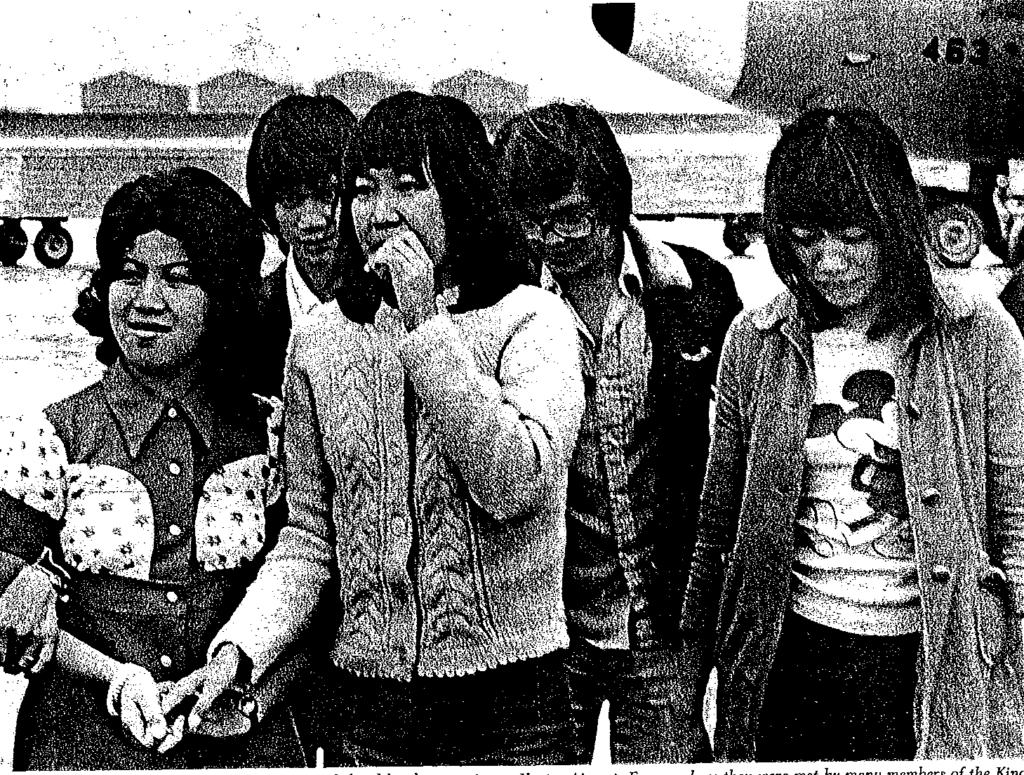clay county histories

Sisters and brothers from Vietnam arrive at Hector Airport, from the Lutheran Social Service Messenger, July 1976.
Markus Krueger | Program Director HCSCC
Like many, I was shocked to hear that Lutheran Social Services of North Dakota was somehow ending after over a century. I thought of my colleagues there who help our museum put on our area’s annual multicultural festival, Pangea: Cultivate Our Cultures. And I thought of many people I’ve met over the years who have come here as part of LSSND’s Refugee Resettlement program.
Refugee Resettlement hasn’t always been the most publicly popular LSS program, but “doing the Lord’s work,” as they say, isn’t always popular (as you know, it could get you killed in Judea 2000 years ago).
Refugees have been settling here long before we called them “refugees.” If you change the dates and the place names, the story of North Dakota’s newest major refugee group – the Nepali from Bhutan – is shockingly similar to the Germans from Russia in the 1880s. Look in your own family tree and you might see people who found shelter here from political or religious danger, famine, or ethnic hate.
LSSND’s Refugee Resettlement program began after World War II. On November 11, 1948, Polish 18-year-old Alex Golubowicz became the first “Displaced Person” LSS resettled in Fargo. Alex lost both parents and an eye in the war. Over the following three months, LSSND sponsored 27 Estonian, Lithuanian and Latvian Lutherans. All were forced to work in Nazi labor camps during the war. All feared returning to homelands whose liberators – Stalin’s Soviet Union – were really tyrannical conquerors. Thanks to LSS, they became neighbors, friends, family, us.
By the 1970s, the need for resettlement was not restricted to Lutherans. As America exited the Vietnam War, LSSND found homes in North Dakota and Moorhead for hundreds of people from Vietnam, Cambodia and Laos. Our first 80 Kurdish refugees arrived in 1976, though the majority of our local Kurdish families came here to escape Saddam Hussein’s sadistic cruelty in the 1980-90s. Bosnians, survivors of ethnic cleansing as Yugoslavia tore itself apart, arrived around 2000. People from Sudan, Nigeria, Liberia and other African nations came next. I’m honored to share a city with families who were marked for death in Iraq for helping the US Army fight terrorists. Individuals came from here and there. They are neighbors, friends, family, us.
The number of refugees settling here has always been a very small percentage of our overall population, but in a community that had traditionally drawn immigrants primarily from a handful of northern European countries, the newcomers were often noticeable. It took a while for some to get used to changing demographics. There have been ugly moments, but also so many moments that fill me with confidence that things are getting better. On a personal note, I want to thank LSSND for introducing me to neighbors, colleagues, friends, and mentors from around the world. LSSND’s Refugee Resettlement program changed Fargo-Moorhead. It was good for us, adding to who we are. Being a place that helps people in need is good for our soul.

